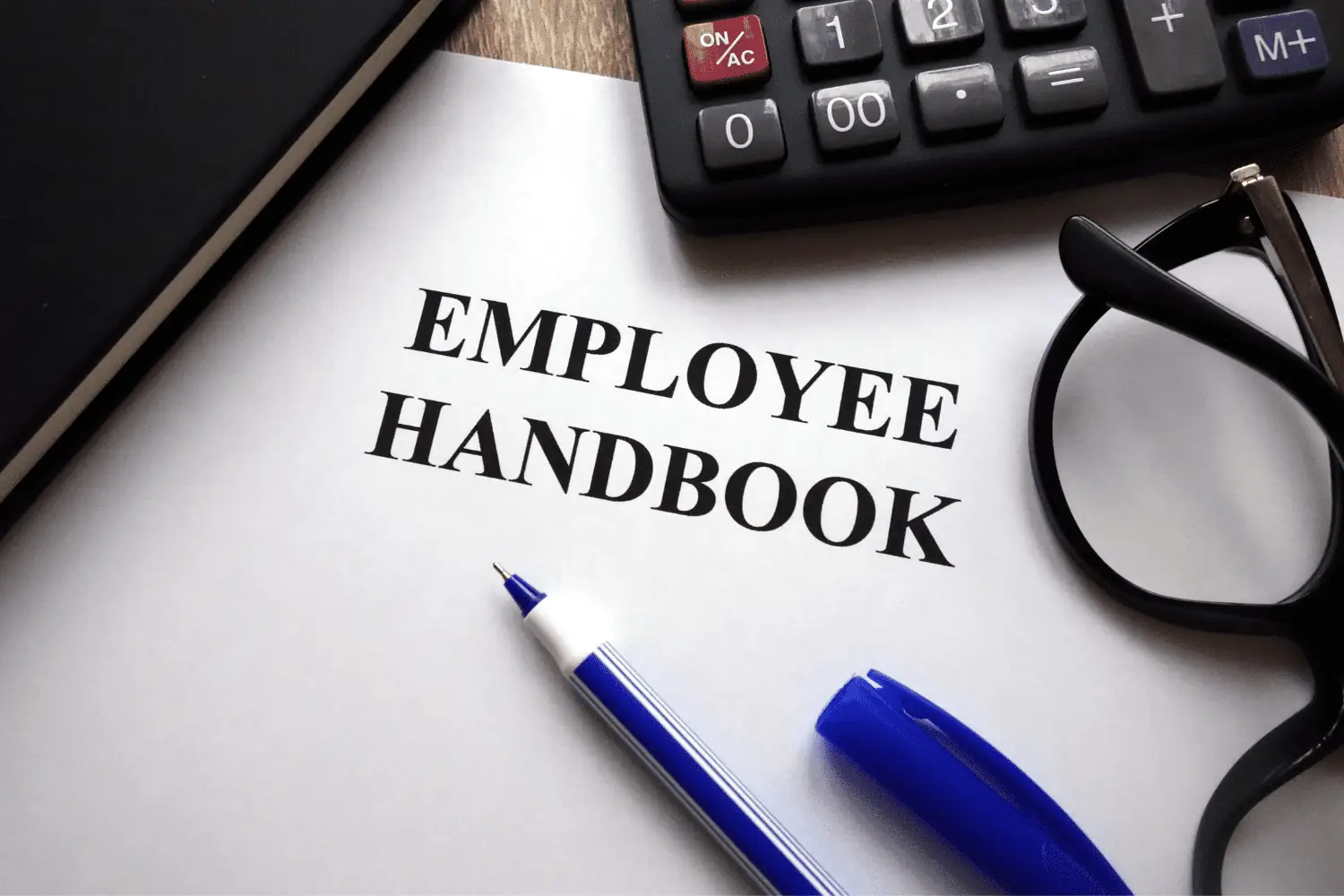5 Essential 2022 Employee Handbook Updates
November 10th, 2021

While employee handbook updates are critical every year to ensure compliance and reduce legal risk, this year, they’re more urgent than ever. Employers need to ensure they’re up to date with the many federal and state level changes that were passed in 2021. Many states are passing legislation surrounding legalized marijuana, protected classes, and COVID-related considerations that will dramatically affect HR compliance regulations. Some employers may want to update the employee policies directly in their employee manuals. For other workplaces, location-based addendums or COVID addendums will be a better strategy. MP’s HR and compliance experts have assisted hundreds of clients in developing employee handbooks and have outlined the five employee policies workplaces must update for 2021.
5 Employee Policies to Update for 2022
1. Drug abuse and testing in employee handbooks.
There are now 36 states that have legalized medical marijuana, 15 legalizing recreational use. No states require employers to allow use of marijuana on the job, but some do protect medical marijuana users from discrimination. Employers should ensure their substance abuse policies comply with all state laws. To reduce legal risk, MP’s HR compliance experts suggest that companies may want to remove marijuana from their drug testing and treat marijuana use similarly to alcohol use in their employee policies.
2. Discrimination in employee handbooks.
Most employers already have policies prohibiting discrimination in their workplace. However, to keep these policies updated, employers should ensure that they now address new protected classes, including sexual orientation and gender identity (which the US Supreme Court determined falls under “sex discrimination”). Employers must check relevant state laws to ensure full compliance by learning about other protected classes, such as those related to military and marital status. If organizations have employees working remotely in other states, your policies should reflect the state-protected classes or categories.
3. Safety in employee handbooks.
It will be vital to create COVID safety addendums for the employee handbook to protect workers, managers, and the organization from legal action. Policies could incorporate the Occupational Safety and Health Act (OSHA) guidance for limiting workplace exposure to COVID. Beyond OSHA standards, employee safety policies should include any other requirements set by individual states, which may be more stringent. Most COVID safety policies should address:
- Hygiene protocol
- Face coverings
- Social distancing
- Safety outside the workplace
- Protocol for quarantining and COVID testing
- Business travel
4. Leave policies and sick policies in employee handbooks.
While the Families First Coronavirus Response Act (FFCRA) leave program has expired, many states are passing mandates for employers to provide paid leave for their workers in COVID-related situations. Some states, including New York, have passed permanent paid leave laws in reaction to the pandemic. Employers should develop leave policies for all relevant state leave laws, include the process for requesting leave and who will oversee related paperwork. These policies should include language that acknowledges interaction with paid family and medical leave laws and the Family and Medical Leave Act (FMLA).
Additionally, employers should update their sick leave policies and expand sick day allotments to ensure that ill employees either work from home or take a day off to prevent the potential spread of COVID in the workplace.
5. Remote work policies in employee handbooks.
As COVID numbers surge again, employers may reconsider keeping employees remote or implementing a hybrid work model. Without a comprehensive telework policy in place, there’s an increased risk of inefficiencies, miscommunications, cyberattacks, and payroll non-compliance. Per a TechJury article, 64% of companies worldwide have experienced a cyberattack. To avoid costly non-compliance penalties, consequences of hacking, and more, employers must either update their telework policies or create them if they have none. An optimized telework policy will include:
- Expectations for handling resources like laptops, headsets, and phones
- How and when work is delivered
- How meetings are conducted
- How employees communicate with managers
- General hours, schedules, and expectations for availability
Recent Posts
- Fortune 500 Power + Personal Touch: How Smart Companies Get Advanced HCM Technology Without Losing Human Connection
- Part 3: Leave Laws & Benefits — What’s Changing Under the BIG Beautiful Bill
- Part 2: Compliance Landmines for Employers — How to Avoid Costly Mistakes Under the BIG, Beautiful Bill
- High-Touch HCM Service: Partners vs Platforms | MP
- Breaking Down the BIG, Beautiful Bill: What Employers Need to Know Now
Categories
- ACA (10)
- AI (6)
- BizFeed (6)
- Business Strategy (120)
- COBRA (5)
- Compliance (241)
- COVID-19 (92)
- Diversity (12)
- eBooks (19)
- Employee Engagement (33)
- Employee Handbooks (24)
- ERTC (29)
- FFCRA (7)
- HR (310)
- MP Insider (13)
- Payroll (163)
- PFML (9)
- PPP (24)
- PTO (5)
- Recruiting (54)
- Remote Work (39)
- Return to Work (32)
- Unemployment (1)
- Wellness (22)
Archives
- October 2025
- September 2025
- August 2025
- July 2025
- June 2025
- May 2025
- April 2025
- March 2025
- February 2025
- January 2025
- December 2024
- November 2024
- October 2024
- September 2024
- August 2024
- July 2024
- June 2024
- May 2024
- April 2024
- March 2024
- February 2024
- January 2024
- December 2023
- November 2023
- October 2023
- July 2023
- June 2023
- May 2023
- April 2023
- March 2023
- January 2023
- December 2022
- October 2022
- September 2022
- August 2022
- July 2022
- June 2022
- May 2022
- April 2022
- March 2022
- February 2022
- January 2022
- December 2021
- November 2021
- October 2021
- September 2021
- August 2021
- July 2021
- June 2021
- May 2021
- April 2021
- March 2021
- February 2021
- January 2021
- December 2020
- November 2020
- October 2020
- September 2020
- August 2020
- July 2020
- June 2020
- May 2020
- April 2020
- March 2020



